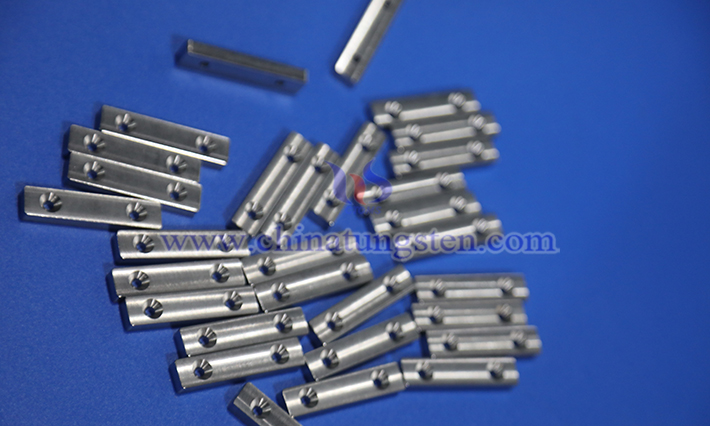Applications of High-Density Tungsten Alloy Counterweight Blocks in Aerospace
- Details
- Category: Tungsten Information
- Published on Tuesday, 17 June 2025 11:10
High-density tungsten alloy counterweight blocks, with their excellent properties such as high density, high strength, and high hardness, have wide and critical applications in the aerospace field, as detailed below:

Aircraft Flight Control System Balancing: Key flight control surfaces like rudders, elevators, and ailerons are critical for aircraft maneuverability. High-density tungsten alloy counterweight blocks can be installed at these locations to adjust the center of gravity, optimizing flight control performance. For instance, in large passenger aircraft, precise placement of tungsten alloy counterweights enhances the sensitivity and stability of control surface movements, allowing pilots to more accurately manage aircraft attitude, improving flight safety and handling. For helicopters, rotor blades must maintain excellent balance to ensure stable flight. Tungsten alloy counterweights can be placed at imbalanced blade positions to compensate for weight differences, maintaining rotor balance during high-speed rotation, reducing vibration and noise, minimizing mechanical wear, and extending rotor lifespan.
Engine Component Counterweighting and Vibration Reduction: Even slight center-of-gravity shifts in aircraft engine turbine blades during high-speed rotation can cause severe vibrations. Counterweight blocks can be fixed to specific impeller locations via welding or bolting to precisely adjust the moment of inertia, achieving dynamic balance and ensuring smooth engine operation. Additionally, installing tungsten alloy counterweights on engine bay supports or mounts can effectively dampen vibrations transmitted to the airframe, reducing structural impact, enhancing the reliability, and extending the service life of onboard equipment.

Satellite and Probe Attitude Control: Satellites require precise attitude control in space to perform tasks like communication and observation. High-density tungsten alloy counterweight blocks adjust the satellite’s center of gravity, working with propulsion systems to ensure accurate orbit entry and maintenance.
Rocket System Counterweighting: Fuel sloshing after loading in launch vehicles can shift the center of gravity, affecting flight trajectory accuracy. High-density tungsten alloy counterweight blocks can be installed in interstage sections or instrument compartments to stabilize the center of gravity, enhancing flight stability and ensuring adherence to the intended trajectory.
Aerospace Ground Equipment and Precision Instrument Calibration: In aviation engine testing equipment, tungsten alloy counterweight blocks serve as standard weights to calibrate rotor imbalance, ensuring good dynamic balance before engine delivery. In spacecraft simulation and calibration devices, such as space environment simulators, these blocks simulate spacecraft payload mass, testing the operational precision of robotic arms or docking mechanisms. In inertial navigation system calibration, tungsten alloy counterweights adjust the platform’s levelness, ensuring navigation data accuracy and supporting precise aerospace navigation.
- Chinatungsten Online: www.tungsten-alloy.com
- CTIA GROUP LTD: en.ctia.group
- Tungsten News & Price: www.ctia.com.cn
- Molybdenum News & Price: news.molybdenum.com.cn
- Tel.: 86 592 5129696; Email: sales@chinatungsten.com